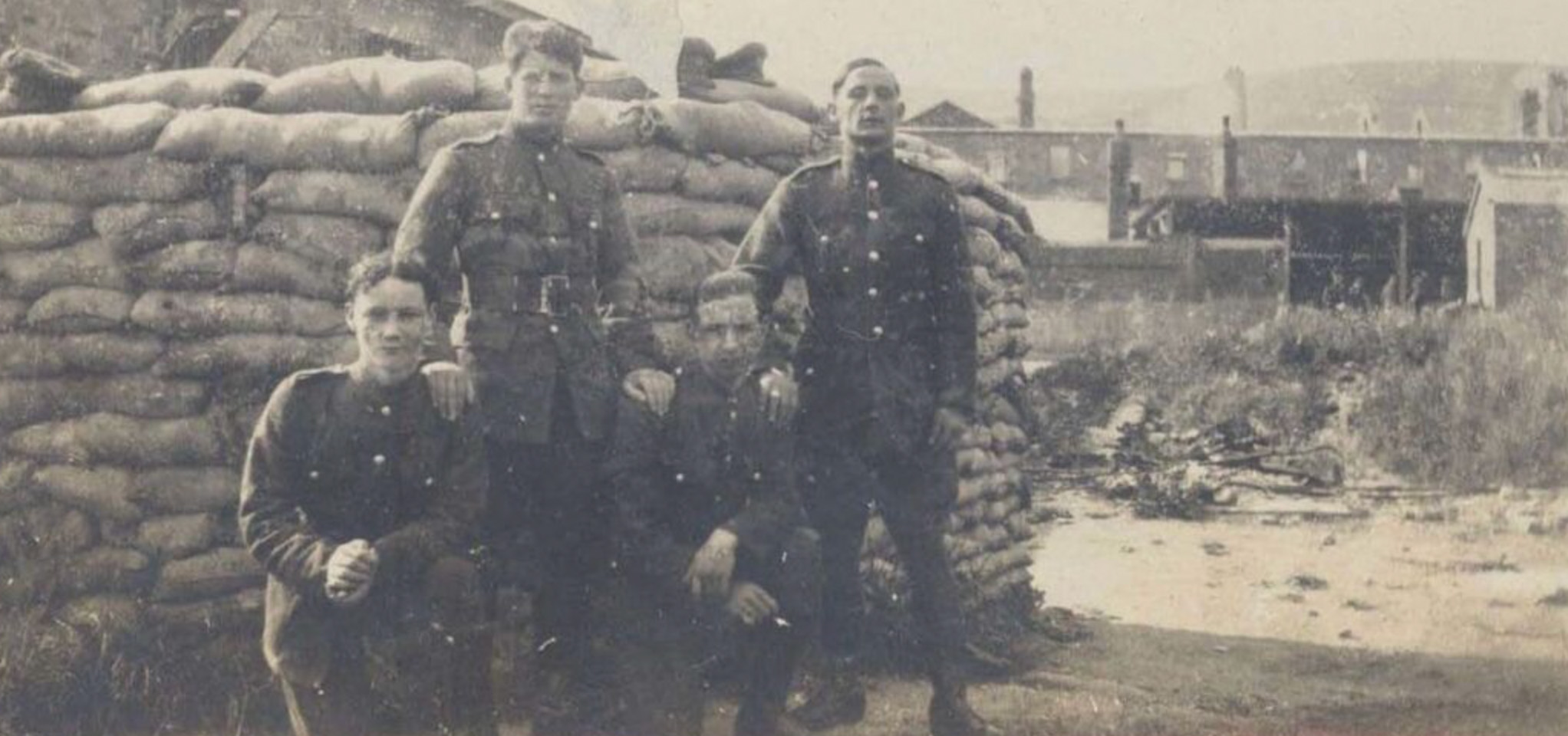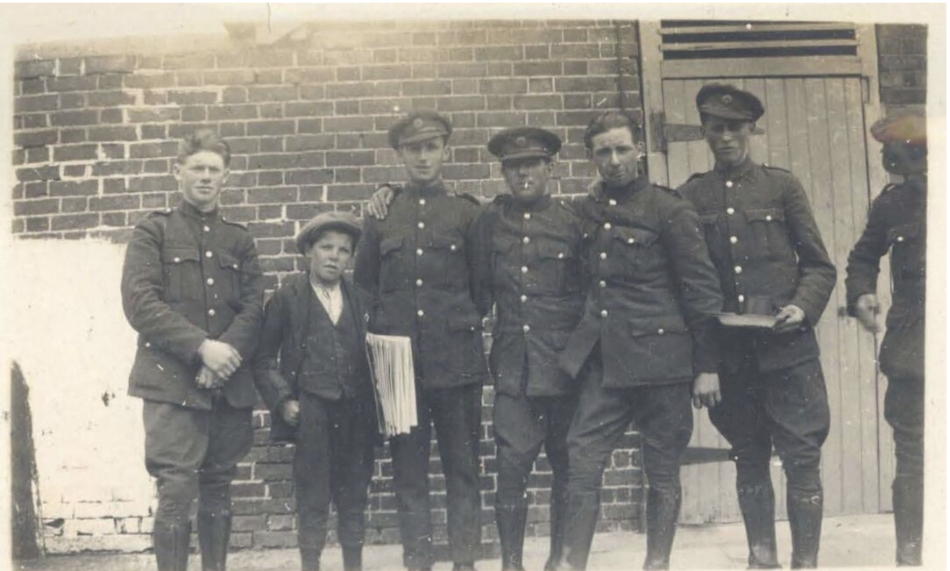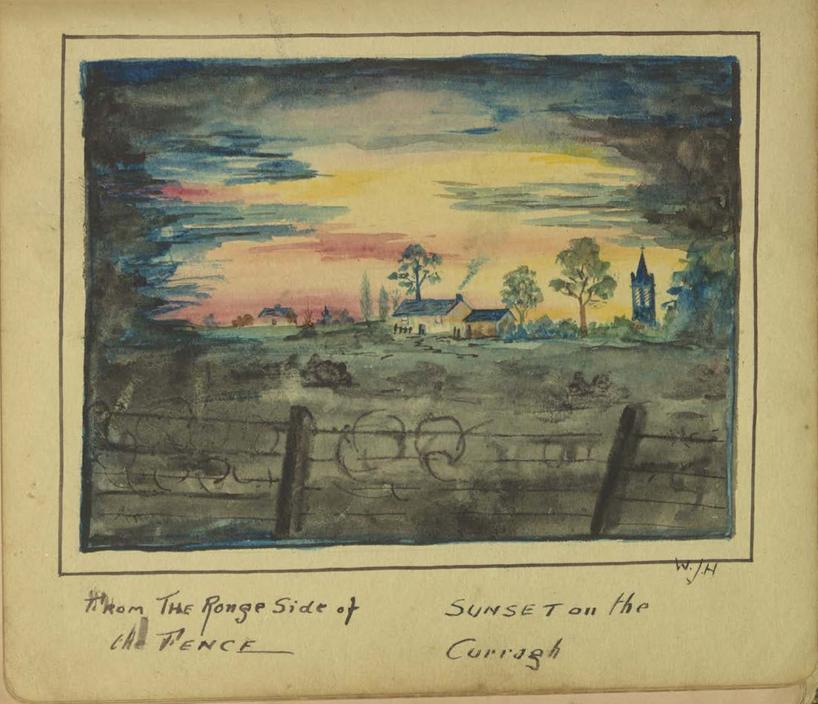Civil War Fatalities in Tipperary

The Civil War in Tipperary
By Denis G. Marnane
Three IRA brigades were active in County Tipperary during the War of Independence. The one that mattered most, and certainly the most famous, was the 3rd Tipperary Brigade operating in the south of the county, where, during that war, there were at least 151 verified fatalities. The commanding officer was Belfast man, Séamus Robinson, who led the brigade until March 1922, when he was given command of the IRA’s 2nd Southern Division, which included south and mid Tipperary.
North Tipperary, the operational area of the 1st Brigade, was part of the 3rd Southern Division, which was pro-Treaty. After Seán Treacy’s death in October 1920, Con Moloney and Denis Lacy successively held the number two spot in the 3rd Brigade. Lacy led the brigade from March 1922 until his death in February 1923. Both Robinson and Lacy were enthusiastically anti-Treaty. Looking at the 112 County Tipperary fatalities listed in the UCC Irish Civil War Fatalities Project, it is no surprise that 73 per cent were in South Tipperary, 24 per cent in North Tipperary and just 5 per cent in Mid Tipperary.
Fatalities before the Civil War
It would be a mistake to think that the period of the Truce was peaceful. Between 11 July 1921 and the surrender of the Four Courts on 30 June 1922 there were around twenty fatalities in County Tipperary. The first was on 28 September 1921 in Tipperary, when a civilian was killed during an altercation between the IRA and the Black and Tans. In December, a newly released IRA internee was killed at Thurles Railway Station when a disaffected RIC sergeant threw a bomb. A few days later that sergeant was killed by the IRA. The new year opened with the killing of an elderly protestant farmer in Dundrum. In early March 1922, two members of the Royal Irish Constabulary were killed in an ambush in Tipperary Town just as the disbanded force was leaving for the last time.
The outbreak of hostilities
When Free State forces attacked the Four Courts at the end of June 1922, Séamus Robinson sent around a hundred men, under Michael Sheehan, to assist the anti-Treaty forces in Dublin. But they were too few and too late. These men would have better served the defence of their own territory as South Tipperary was a vital part of the defensive line between Waterford and Limerick that delineated the so-called ‘Munster Republic’.
At the start of the Civil War many of the IRA officers who had been most active in the War of Independence, especially in Munster, were anti-Treaty. However, as the National Army, which had a unified command, grew stronger, the more localised anti-Treaty IRA grew weaker. One disadvantage of the Provisional Government’s rush to recruit an army was inadequate training. In Tipperary during the Civil War, five National Army soldiers died of accidental gunshot wounds.

Fig. 1 National Army soldiers in a County Tipperary town during the Civil War [Image: Seán Sharkey Collection. Courtesy of Neil Sharkey, Tipperary Studies]
Controlling the Towns
During the first weeks of the Civil War, the IRA controlled the urban centres of Clonmel, Cahir, Cashel, Carrick-on-Suir and Tipperary Town. Thurles in mid Tipperary and, allowing for some temporary incursions, the towns in North Tipperary remained under Free State control. In late July and early August the IRA were forced to withdraw from towns in the south of the county burning many of the military barracks in their wake. The exception was Tipperary town where, between Friday 28 July and Sunday 30 July, the IRA fought to retain control. The battle resulted in five fatalities, including seven-year-old Julia French who was caught in crossfire. At least one National Army soldier and two members of the IRA were killed around Golden as the National Army approached Tipperary Town.
-767x1126.jpg)
Fig. 2 Map showing the location and affiliation of the 112 combatant and civilian fatalities in County Tipperary between 28 June 1922 and 24 May 1923
Guerrilla War
Free State forces occupied Clonmel on 9 August. By the middle of the month the government was in control of the towns but not of the countryside. From August, the IRA resorted to a guerrilla war waged against the more numerous, better equipped but less experienced Free State soldiers. In contrast to the War of Independence period, the countryside was divided in its politics but there remained a strong measure of support for the anti-Treaty position in Tipperary. Over the following months, the IRA deployed various tactics. The rail network was damaged, bridges were destroyed and there was constant sniping at towns occupied by the National Army. This was especially the case in Clonmel and Carrick where there were contiguous hills. On Sunday 11 February 1923 eighteen-year-old drapers’ assistant John O’Grady was killed by sniper fire as he was coming from Mass in Clonmel. That same month, the town was subjected to machine gun fire from surrounding hills. Between March 1922 and March 1923 sixteen of Tipperary’s ‘Big Houses’ were damaged or destroyed, including Castlefogarty near Thurles, Kilboy near Nenagh, Marlfield near Clonmel and Ballinacourty near Tipperary Town.
Lethal Ambushes
The most lethal engagements between the two sides were a sequence of IRA ambushes on government forces as they moved between towns. Most of these ambushes, resulting in a significant share of the fifty-four National Army fatalities in Tipperary, occurred between August and October 1922. The road between Cahir and Clonmel proved especially dangerous for National Army soldiers and was the location for several ambushes. The first occurred on 16 August 1922 at Woodrooffe outside Clonmel when an attack led by Jack Killeen resulted in the three National Army fatalities. Another ambush two days later at Kilfeacle, led by Denis Lacy yielded no casualties, but two National Army soldiers were killed in an ambush at Redmondstown near Clonmel on 21 August. On 26 August a small convoy of soldiers travelling from Nenagh to Limerick were ambushed by the IRA at Bushfield resulting in two National Army deaths.
There was another IRA ambush at Woodrooffe on 7 September and one National Army soldier was killed. Ten days later a party of sixteen Free State soldiers were ambushed at Boher near Nenagh. The attacking column of some forty men was led by Pat McDonnell. Three National Army soldiers and one of the ambushers, sixteen-year-old Thomas Hayes, were killed. The dangerous Cahir-Clonmel road was the scene of another ambush on 2 October, again near Woodrooffe, when an IRA column of perhaps a hundred men, led by Paddy Dalton ambushed a single vehicle carrying an officer and twelve soldiers. Land mines and machine guns were deployed and three National Army soldiers were killed before the rest surrendered. Their boots were of particular interest to the poorly equipped IRA.
Free State Forces gain the upper hand
The loss of senior IRA leaders negatively impacted the republican forces in Tipperary. Paddy Dalton was shot dead at Donohill during an engagement on 26 October and Jack Killeen was captured on 18 September near Slievenamon while on his way to attend a brigade meeting at Kilcash. Indicating the extent to which the Free State was gaining the upper hand, there were just four National Army fatalities in November and December 1922.
Ten days into 1923 and another IRA column leader was killed. Martin ‘Sparky’ Breen had briefly returned to his home in Tipperary Town to change his boots when he was surprised and killed by a National Army patrol. A companion was also shot and died six months later. These were deaths in action but the four IRA Volunteers, Frederick Burke, Martin O’Shea, Patrick Russell and Patrick McNamara, executed in Roscrea Castle on 15 January 1923, were victims of a government determined to assert its authority. The point has been made that such executions would have been more likely in the south of the county, but threats of retaliation by the 3rd Brigade were effective.
A month later, two IRA leaders, two National Army soldiers and a child were killed during a gun-battle in Aherlow, part of a concerted National Army sweep of the area. One of those IRA leaders was Denis Lacy whose death was a severe loss to the anti-Treaty side. Eddie Quirke, who was struck in the head by a stray bullet, was ten years of age and had lost his mother during the great flu epidemic of 1918. He was later given the status of a republican fighter to allow the family to make an application for compensation.
The Turning Tide
One third (7) of the pro-Treaty fatalities from November 1922 were the result of individuals being found by the enemy in isolated or unprotected circumstances. On 14 November Harry Phelan, a member of the new Civic Guard, and the only member of the new unarmed police force to die as a result of political violence during the Civil War, was killed in Mullinahone while off-duty shopping. On 3 January 1923 National Army soldier William Hogan was shot dead in a public house in Silvermines, North Tipperary. On 3 April the bodies of two National Army officers, George Cruise and James Kennedy, missing since late January, were found near Clonmel. On the anti-Treaty side, twenty-two of the thirty-seven fatalities occurred after October 1922 when the National Army fatality numbers began to fall and the Free State increasingly exerted control, not always legitimately. At least six IRA prisoners were killed while under arrest.

Fig. 3 Sunset on the Curragh from the ‘Rong side of the fence’, drawn in Seán Sharkey’s prison autograph book by a fellow republican internee in 1923. Born in Clonmel in 1900, Sharkey was active with A Company, 4th Battalion (later part of the 5th Battalion), South Tipperary Brigade during the War of Independence. He was interned in Tintown No. 3, The Curragh, County Kildare, during the Civil War. [John Sharkey Autograph Book, Tintown No. 3, 1923, Tipperary Studies Digital Archive, © Neil Sharkey]
Civilian Fatalities
There were twenty civilian fatalities in County Tipperary between 28 June 1922 and 24 May 1923, of whom six were women. Two children were killed in the middle of exchanges of fire, at Tipperary Town and in Aherlow. The first of the civilian fatalities was Mrs Hanna O’Meara, wife of a Nenagh hotel owner. She was shot dead in front of her hotel on 30 June 1922 during a failed IRA attempt to capture that town. At least seven of these civilians were targeted and killed by the IRA as alleged spies. In September 1922, the body of estate worker Thomas Brennan was found at Aherlow, his killing being part of a complicated relationship between the local IRA and the Ballinacourty Soviet.
The Geography of Civil War Fatalities
During the Civil War in County Tipperary the countryside was more dangerous than towns or villages and accounted for 63 per cent of fatalities, mainly in ambushes. Carrick accounted for nine fatalities, of which four were accidents. The six fatalities in Tipperary Town occurred during the fight for control in late July 1922. Clonmel and Roscrea had four fatalities each.
Given its record during the War of Independence and especially South Tipperary’s commitment to the republican cause, the number of Civil War fatalities was high. Measured by the number of fatalities, the advantage was with the 3rd Brigade in the early part of the Civil War but in the end, numbers mattered as evidenced on 10 April 1923 when the IRA Chief of Staff Liam Lynch was killed during a National Army round up at Crohan near the Tipperary/Waterford border.
A recent study, The Civil War in County Tipperary (2021) details 175 post-War of Independence fatalities. Taking a wider field than the UCC Irish Civil War Fatalities project, it includes fatalities during the Truce, Tipperary men who died outside the county during the Civil War and fourteen men whose deaths after 24 May 1923 were related to the Civil War.
Fatality Profiles
Julia French
Julia French was born in Tipperary Town in March 1915. Her father Joseph, a bugler with the 3rd Rifle Brigade, was killed on 6 June 1916 during the Somme campaign. Young Julia was brought up by her mother’s family. On Sunday morning 30 July 1922, during the final day of the battle for Tipperary, seven-year-old Julia was being brought to the children’s Mass by her grandfather Neddie Martin. Passing Bank Place, Julia French was shot in the stomach and died immediately.
Margaret Ryan
Because Margaret Ryan died in a Dublin hospital, her death is included in the fatalities list for that county. However, her story is entirely set in County Tipperary and illustrates that activist women were not always members of Cumann na mBan; that such political activism was usually part of a wider family involvement and how rapidly-recruited National Army soldiers were inadequately trained.
Jerry Ryan was very active in the 2nd Tipperary Brigade IRA during the War of Independence. In the Civil War he supported the Treaty and was in charge of the Free State garrison in Thurles when in the early summer of 1922 it was beleaguered by Republicans. In mid-July Ryan was confident enough to take the fight to the enemy and on 14 July a sergeant in the National Army was killed.
Ryan’s twenty-two-year-old sister Margaret, who worked as a bookkeeper, was a huge help to her brother and an activist in support of the Treaty. On Saturday 15 July Margaret Ryan attended a military ceremony in Liberty Square, Thurles honouring the deceased sergeant. She was in the act of placing a wreath on the coffin when a soldier’s revolver discharged accidentally shooting her in the stomach. She was rushed to Dublin but died in Dr Steeven’s Hospital on Tuesday 18 July. On 20 July much larger crowds gathered again in Thurles for Margaret Ryan’s funeral.

Fig. 2 Memoriam card for Margaret Mary Ryan
Thomas (Laddie) Hayes
Thomas Hayes worked for his father who was a cattle dealer and had a butcher’s shop in Nenagh. Known as ‘Laddie’, Hayes was very young when the War of Independence began. Why he took the Republican side is unclear but he joined the 3rd Battalion of the 1st Tipperary Brigade. He was part of the column under Pat McDonnell which on 17 September 1922 ambushed a group of National Army soldiers, killing three, on their way to mass at Boher. McDonnell later wrote about the success of the ambush, which included the capture of fifteen rifles and 1,500 rounds of ammunition. He also explained that he ‘lost one man, Hayes Nenagh, who was shot by my side’. Thomas, ‘Laddie’ Hayes, was sixteen years of age (born 26 Jan 1906).
Header Image: National Army soldiers in a County Tipperary town during the Civil War [Image: Seán Sharkey Collection. Courtesy of Neil Sharkey, Tipperary Studies]
Author’s Bio
Denis G. Marnane is editor of Tipperary Historical Journal and author of The 3rd Brigade (2018) and The Civil War in County Tipperary (2021).




